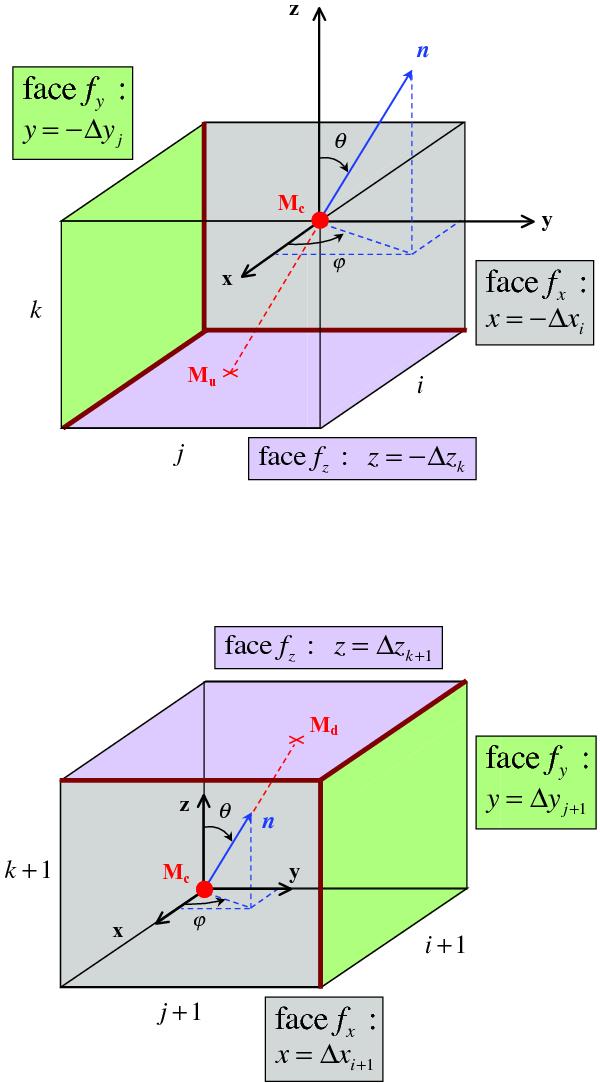Fig. 2

Upwind cell (top) and downwind cell (bottom), for the short-characteristic MuMc displayed in Fig. 1. In this example, the direction of propagation of the radiation, n, is in the first octant, which corresponds to (θ,ϕ) ∈ [0,π/2 [× [0,π/2 [. The local coordinate system is defined by (Mc,ex,ey,ez). The upwind end point Mu belongs to the cell face fz:z = −Δzk. However, depending on (θ,ϕ) in this octant, Mu may belong to fx:x = −Δxi, or to fy:y = −Δyj. In the general case, Δxi ≠ Δyj, Δxi ≠ Δzk, Δyj ≠ Δzk, though equalities are possible. The downwind end point Md belongs to fz:z = Δzk + 1. However, depending on (θ,ϕ) in this octant, Md may belong to fx:x = Δxi + 1 or to fy:y = Δyj + 1. See Sect. 3.2 for more details.
Current usage metrics show cumulative count of Article Views (full-text article views including HTML views, PDF and ePub downloads, according to the available data) and Abstracts Views on Vision4Press platform.
Data correspond to usage on the plateform after 2015. The current usage metrics is available 48-96 hours after online publication and is updated daily on week days.
Initial download of the metrics may take a while.




